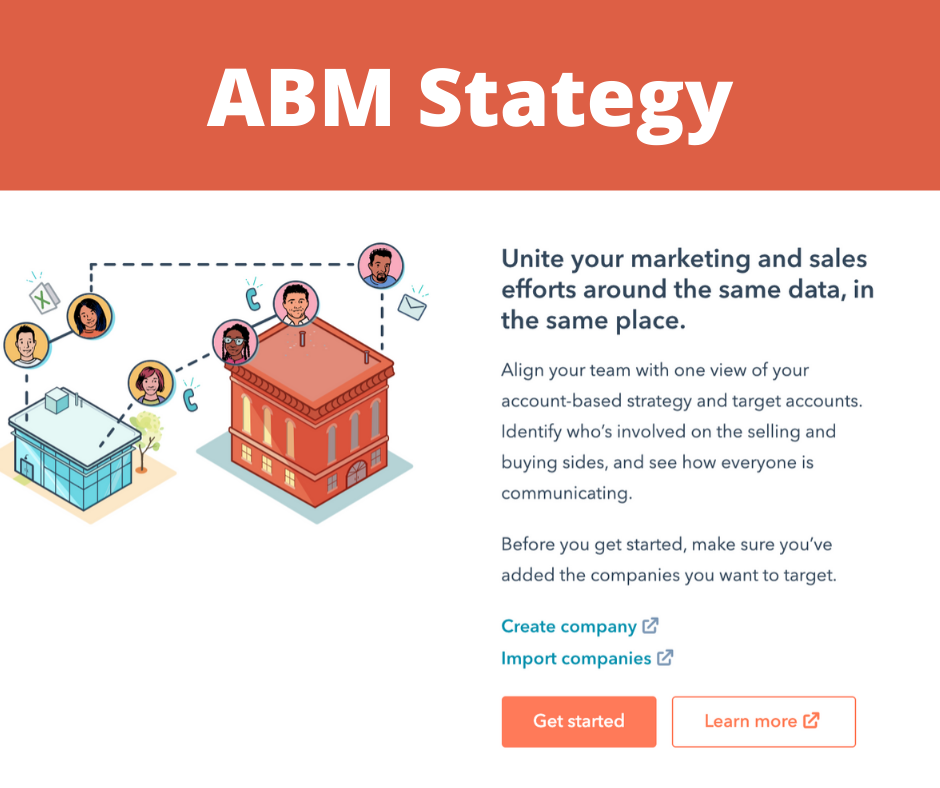This article walks you through the ABM/S strategy and process we’re implementing in companies today.

Have you recently heard the “BUZZ” around Account-Based Marketing/Sales and wondered if that would be a good fit for your company as well?
To start, I will let you know that this strategy won’t be a good fit for every B2B company— and I'm not talking at all about B2C.
What Is an Account-Based Marketing and Sales Strategy?
Account-Based Marketing and Sales is a growth strategy used by companies to focus on individual targeted accounts in their sales and marketing teams. Unlike traditional marketing and sales strategies which focus on targeting a significant number of leads and contacting them through sales, ABM focuses on an identified set of high-value accounts. This way, they personalize the journey of the companies buying committee, as they are the ones responsible for purchasing products and/or services.
Instead of targeting a significant number of leads and contacting them through sales, ABM focuses on an identified set of high-value accounts in order to better personalize their buying committee’s journey, as they are responsible for purchasing products and/or service.
How Do You Know if ABM/ABS Would Be a Good Fit for Your Company’s Revenue Strategy?
Working on both sales operations and sales enablement with many companies has allowed us to think about the best practices when it comes to sales strategy. During those processes, we collected some steps you should consider while thinking about ABM/ABS strategy:
1. Check Your Average Deal Size and Time Spent on Deals:
This relates to the marketing and sales teams’ efforts together as one team.
The inbound strategy is joined by communication and consistency between teams, as well as adjusted content. This inbound methodology invests in and brings value to leads and prospects by sharing knowledgeable content and becoming “thought leaders” in the field.
It is a transparent method that helps in aligning marketing and sales goals together.
In the end, inbound marketing and sales are all about leading the customer through a process that suits their needs, identifies their “jobs to be done,” and accelerates the organizational flywheel (not funnel :-P).
If you are already using inbound marketing in your organization, you’ll find it easier to implement the ABM strategy.
In the end, inbound marketing and sales are all about leading the customer through a process that suits their needs, identifies their “jobs to be done,” and accelerates the organizational flywheel (not funnel :-P).
When you start investing in ABM strategy, the first thing you need to know is that you’re going to spend a great deal of time on each account, personalizing the buyer journey and focusing on their sales process. Therefore, you must check your average deal size before implementing this strategy. All parameters, such as annual contract value (ACV) and customer’s lifetime value, are critical when thinking about ABM strategy.
- When your average deal size is $250, ABM may not be fit for your company. Implementing the ABM strategy may lead to a negative ROI because of the time you spend on winning each account.
- If your average deal size or annual contract value is more than $15,000, it may be worth focusing on a certain number of targeted accounts than targeting a massive number of people.
2. Check Your Average Sales Cycle Length

If your average sales cycle length simply takes a few days or weeks, it doesn’t make sense to invest in the ABM strategy.
When the sales cycle length is significant, the buying journey is longer; the opportunity to invest in such a journey is higher and more powerful. In basic terms, if the sales cycle length takes six months, your marketing team will have more time to personalize their ads, focusing on different roles and targets. Additionally, your sales team will have the opportunity to create meaningful relationships with the account’s relevant buying committee.
3. Your Customer Success Model (High Touch, Medium Touch, Low Touch)
You're more likely to be a good fit for ABM if you have a high contact product. When both your product and customer success team involve one-on-one assistance and personal guidance, it’s reasonable to dedicate the sales process to focusing on the account’s need.
4. Number of Stakeholders
How many stakeholders do you need to get on board in order to win a deal?
If there are many people involved in your sales process, several different people have to be won over by your product and service. Because each stakeholder has distinct interests and goals:
- Each stakeholder should see different types of content.
- Each stakeholder should be approached differently.
- The ABM strategy will be more focused and personalized.
5. Alignment with Marketing Through Personalized Content
It’s all about cross-team collaboration between Marketing and Sales. There is not only ABM or only ABS. The purpose of this strategy is to bring two strong teams together in alignment.
How much does your marketing align with your sales goals? Account-Based Marketing and Sales can help that happen as well!
There’s no point in having sales go after high-value, targeted accounts if marketing targets everyone.
The two teams have to decide which companies should be targeted and which employees to contact. The marketing team will expose different content to several employees. Meanwhile, sales will also approach the company. Once a week, both departments will have an alignment meeting to review current campaigns and measure results. Sounds like a plan!
If your company isn’t adjusted to align both teams, then the ABM/S strategy will be difficult to implement and quite useless to your business.
*Don't Forget to Combine ABM with Inbound Strategy to Grow*
This relates to the marketing and sales teams’ efforts together as one team.
Inbound strategy goes hand in hand with communications, consistency and adjusted content between teams. The inbound methodology brings value to leads by sharing knowledgeable content and becoming “thought leaders” in the field.
It is a transparent method that helps in aligning the goals of marketing and sales.
In the end, inbound marketing and sales are all about leading the customer through a process that suits their needs, identifies their “jobs to be done,” and accelerates the organizational flywheel (not funnel :-P).
If you are already using inbound marketing in your organization, you’ll find it easier to implement the ABM strategy.


.png?width=80&name=photos%20team%20(4).png)
Comments